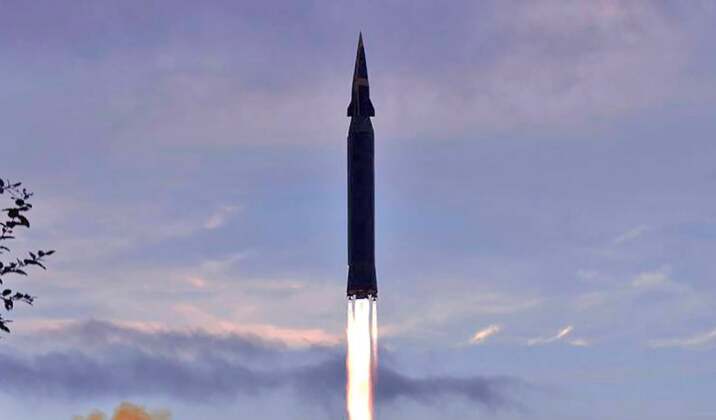News
As Iran Unveils its First Hypersonic Glide Vehicle – Were North Korean Tech Transfers Behind It?
On June 7 Iran unveiled its first ever missile class integrating a hyepronsic glide vehicle, which represents a potentially revolutionary development for the country’s strike capabilities against targets across the Middle East and possibly far beyond. The Fattah missile was unveiled at a ceremony attended by President Ibrahim Raisi and senior officers from the Revolutionary Guards Corps – a service which is responsible for the country’s ballistic missile arsenals as well as the large majority of its overseas operations. Amirali Hajizadeh, the head of the corps’ aerospace forces, stated regarding the missile: “The precision-guided Fattah hypersonic missile has a range of 1,400 km and it is capable of penetrating all defence shields,” which was widely reiterated by state media outlets. “It can bypass the most advanced anti-ballistic missile systems of the United States and the Zionist regime, including Israel’s Iron Dome,” one outlet reported elaborating that the missile has a maximum speed of Mach 14 which is considered sufficient to bypass any known missile defence system. Should the Fattah enter service in the near future it will make Iran the fourth country in the world to field hyepronsic glide vehicles after China, Russia and North Korea, with the United States having faced multiple setbacks in its own rival programs and cancelled its own most promising program the AGM-183A in March after persistent failures during testing.

The limitations of Iran’s defence sector has brought its ability to independently develop hypersonic glide vehicles into question, with these technologies only thought to have been fielded by technological leaders in the field for under four years since China introduced the DF-17 missile in 2019. Russia introduced these assets in a limited capacity in December that year with the Zicron cruise missile and the ICBM-mounted Avangard glide vehicle. The Iranian missile industry, although being one of the world’s largest, has long been far behind those of Russia, China and North Korea, which alongside a four decades history of major acquisitions of North Korean missile technologies has fuelled speculation that the Fattah may also heavily benefit from Korean technologies. North Korea first flight tested a ballistic missile with a hypersonic glide vehicle in September 2021, with the Hwasong-8 estimated to have a range of approximately 1800km.
Iran first began exporting ballistic missiles to Iran in the early 1980s, with Iran being its first client after Egypt to acquire the Hwasong-5 Scud-derived missile followed by the Hwasong-6 and Rodong-1 which were built under license in Iran – with the latter still being produced in improved variants and providing the country with its first strategic strike capability due to its long range. These were followed by a range of other missiles including the Hwasong-10 with a very long 4000km range, which was produced in Iran under license as the Khorramshahr, with other Iranian missiles having benefitted significantly from Korean technology transfers and support from Korean expertise and components. Korean support for development of the Fattah would thus be very much in line with the trends of the last 40 years. Pyongyang has benefitted not only from considerable revenues from arms exports and technology transfers to Iran, but also from further stretching American and Western militaries and attentions by bolstering key adversaries elsewhere in the world.

Hypersonic glide vehicles are prized for their extreme speeds, which are sustained throughout their flight and not only in their terminal phases, as well as for their ability to manoeuvre in both course and pitch which makes them highly challenging for air defences to even detect. Their extreme speeds, allowing them to strike targets across continents within minutes, also significantly reduces adversaries’ warnings times. Such technologies have signifiant applications for the Iranian Revolutionary Guard Corps’ arsenals, including for integration onto longer range missiles capable of strike NATO territory, as well as for developing anti ship missiles which could expand the already significant threat faced by American carrier groups. Iran’s relatively modest conventional forces, which are built around tanks, artillery and aircraft largely from the 1970s, have made development of a more potent ballistic and cruse missile arsenals all the more important to its defence as an asymmetric and much less costly means of deterring possible attacks.












